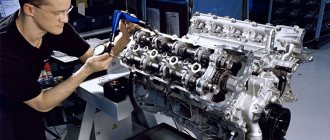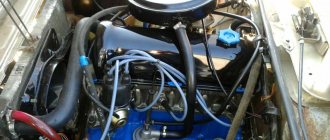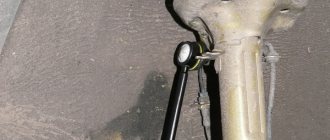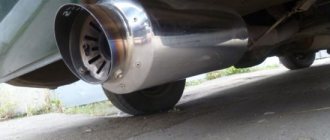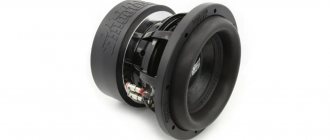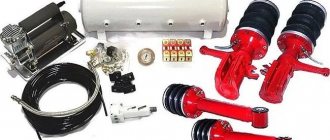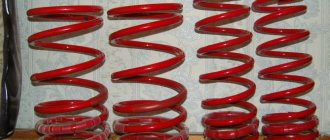The wheelbase is the horizontal distance between the axles provided by the design in the car. If we are talking about a three-axle vehicle, then this refers to the distance between two successive axles located on the same side of the vehicle. For any modern vehicle, the technical specifications indicate such a point as the size of the wheelbase. Some motorists ignore this definition, while others have no idea what we are talking about. Of course, this characteristic is extremely important for any car, for the simple reason that it characterizes how comfortable the driver will be over the artificial bumps that are ubiquitous on most Russian public roads. In this case, you need to understand the definition of wheelbase, as well as understand how this indicator is calculated.
Characteristic
So, let's start with the definition itself. Wheelbase is the distance between the center of the rear and front axle of a vehicle. In other words, this is the center length of the car. There are different wheelbase widths. There are long and short wheelbase vehicles. They have different characteristics of control, maneuverability, maneuverability, etc.
Some novice car owners confuse this term with ground clearance. However, the latter means ground clearance. This is the distance between the lowest point of the car and the road surface. The values rarely exceed 20 centimeters (if we don’t talk about off-road vehicles). The wheelbase size starts from two meters. And the larger the car, the greater this parameter.
Long version
As you understand, executive cars are equipped with a long wheelbase version. This creates additional benefits for passengers. For example, in the cabin the back row is far away, and therefore you can at least sleep.
Large frame SUVs can accommodate three rows of seats, which increases the capacity; instead of the usual five people, 7 to 8 can be accommodated. Driving characteristics have also been improved in the direction of comfort - small bumps, potholes, rails, etc. They don't feel that strong! These cars are more stable on the track, due to good weight distribution, and also have improved acceleration. They take turns much easier and have reduced roll.
It is worth noting that manufacturers are trying to produce such cars with front-wheel drive - it’s not so easy to simply “drag” the driveshaft back! The design will definitely become more expensive, and the weight will also need to be redistributed.
Classes
You've probably heard that each car belongs to its own class. The latter is in alphabetical order. What influences whether a car belongs to one segment or another? It's the wheelbase that makes the difference. These can be cars of the following classes:
- A is the smallest segment. The distance between the centers of the front and rear wheels does not exceed 2400 millimeters.
- B - wheelbase (mm) ranges from 2400 to 2500.
- C – from 2580 to 2750.
- D is already business class. The length of the wheelbase is 2850 millimeters.
- E - no less than D, but not more than 2950 millimeters.
The distance may depend on the body style. The longer it is, the higher the class. Accordingly, the cost of the car also changes.
Track, ground clearance, wheelbase - what is it and what does it affect?
Each car developed by manufacturers has its own technical parameters and characteristics.
Knowing them, drivers can safely operate the car in various conditions, taking into account environmental factors. Every day new terms appear in the auto industry that are not always immediately clear to drivers. But there are also those that have been known for a long time. We are talking about terms such as ground clearance, wheelbase and track. It is important for drivers to know what it is and how these parameters affect the chassis of the car.
Ground clearance refers to ground clearance and can vary in height, depending on the car model. In simple terms, ground clearance is the amount or height of clearance between the car and the road.
Wheelbase is a more complex concept. In simple terms, this is the longitudinal distance between the axles of the front and rear wheels.
For many motorists, a track is an uneven road, but, one way or another, each car has its own track. This term refers to the average distance between the centers of the wheels located on the front axle. If this is a wheelset, that is, a dual wheel, then the center will be found at the point where the two wheel rims meet. The wider this distance, the more stable the car is on the road.
Why is it important. Drivers should know and understand these parameters as they are important. Ground clearance is of greatest importance when operating a vehicle off-road. Drivers who know the ground clearance of their car well will never sit on their belly. But when operating a car on smooth asphalt city streets and good country roads, the size of the ground clearance does not matter.
The track width must be known to drivers in order to know the vehicle's stability parameters, which also play a key role. An important point is that if the track width of the front wheels differs from the rear, then this significantly complicates the movement of the car or even blocks it.
As for the size of the wheelbase , it directly affects the position of the car on the road; the larger it is, the easier it will be to keep the car on the road, which increases stability and maneuverability. For the full operation of the car, knowing these parameters is really extremely important.
Changing the technical parameters of the car. Some drivers are confident that during operation they can independently change certain parameters of the car, but this should be done only if the driver is sure that after all the changes the operating process will not become more difficult or impossible.
Often it is almost impossible to change technical parameters on your own. That is why it is best to contact professionals who will perform all the work and actually change the technical data of the machine. At the stage of creating vehicles, manufacturers comply with parameters that are important. This has a positive effect on the further operation of the car, which is important for all motorists, without exception.
Conclusion . It is almost impossible to create the perfect car. That is why, sometimes, changing the technical parameters of a car is also pointless. Drivers do this without thinking, simply giving in to the desire to change the car that arises instantly. In order not to regret the work done later, you need to think about what the end result will be and whether the driver really needs it before starting to change the parameters.
Resizable
In the 70s of the last century, American manufacturers practiced a variable base parameter. The figure depended on the design of the chassis. Thus, the car suspension was built on trailing arms. They were often installed at the rear. The front wheels were stationary in terms of expansion. So, depending on the load, the wheelbase expanded or narrowed. Currently, this design is used only on commercial vehicles.
Some French-made cars had an uneven wheelbase. This meant that the front side was narrower than the back by several centimeters. On Renault 16 this parameter was 6.5 centimeters. Do not confuse an uneven base with unequally wide discs. The latter are installed for aesthetic purposes. In the standard, all parameters remain the same.
Long wheelbase
These are executive cars, as well as SUVs. What are the advantages of such cars?
A long wheelbase is a guarantee of comfort, especially for rear passengers. The higher the parameter, the more space in the cabin. Thanks to the long wheelbase, frame SUVs can accommodate up to seven passengers (in three rows). But free space is not the only advantage of this design. Due to the long body, the car absorbs potholes and other irregularities better. On the track, such a car is more stable, has better weight distribution and makes turns easier.
Recently, more and more manufacturers have begun to equip their long-wheelbase vehicles with front-wheel drive. And there are reasons for this. After all, it is quite difficult to lay a long cardan through the entire interior. Plus, this noticeably hides free space. The tunnel creates an uneven floor.
How to increase your wheelbase yourself
It is necessary to take into account the fact that it is practically possible to increase the wheelbase of your vehicle. However, to do this you will have to face large financial costs, as well as a lot of time spent. Moreover, such a change is not always advisable, since the key characteristics of the car deteriorate because of this, and it will no longer be possible to bring them to their previous levels. In this situation, some nuances should also be taken into account. In particular, as the wheelbase increases, the suspension components will be subject to faster wear. In addition, during the process, the motorist will often encounter breakdowns of bearings, as well as struts, for the simple reason that the load on them will increase significantly. The car owner can make the base increase, but at the same time the wheels themselves will protrude beyond the arch, which is why the vehicle will constantly get dirty quickly. Separately, it is worth recalling that any changes to the design of the car must be properly registered with the traffic police. Otherwise, such a vehicle cannot be operated on public roads. That is why changing the length of the wheelbase is an irrational activity that will cause a lot of inconvenience to the motorist.
Short wheelbase
This segment includes all A, B and C-class cars. Surprisingly, they are more popular and widespread than their long-wheelbase counterparts. What are the advantages? First of all, it is maneuverability. Short-wheelbase vehicles respond better to the steering wheel, which gives confident handling in densely populated cities. Another plus is cross-country ability. Such machines are distinguished by short overhangs, due to which they take a higher lifting angle. Short wheelbases are not always the case - these are only passenger cars. This segment also includes crossovers (for example, Opel Mokka).
The car has high ground clearance and handling. And all-wheel drive modifications can give a head start to long-wheelbase frame SUVs. But many still cannot choose which class of car is best to buy.
Which is better - long or short base?
There is no clear answer to this question. Both types of cars have both pros and cons. Let's look at long-wheelbase vehicles first. Their main advantage is the availability of free space in the cabin. Owners also note the spacious trunk, especially on station wagons in this segment. The car holds the road well on the highway and turns like a glove. But some manufacturers still use a rear-wheel drive layout, which is why the cost of such cars immediately rises by 30 percent. This is one of the significant disadvantages of the D- and E-class.
Also, these cars are difficult to travel off-road. On the dirt road you can easily sit on your belly. And even if you manage to overcome the obstacle, there is a risk of getting caught in the front or rear bumper due to the long overhangs. There is no point in purchasing frame SUVs for the purpose of going out of town once a month.
Now let's move on to short-wheelbase vehicles. They are an order of magnitude cheaper than their long counterparts. These cars also handle better. Another significant advantage is its compactness (especially for large cities). Finding a parking space in such a car will not be a problem. You can also easily drive through narrow streets. When off-road, it is the short wheelbase that wins. The VAZ Niva, for example, has been considered the best budget car for off-roading for decades.
Among the shortcomings are the small trunk capacity and the lack of free space in the cabin. However, some cars are arranged in such a way that a 2-meter passenger can fit inside without any problems (Mercedes C-Class, for example).
But on the highway this car behaves more “sloppy” than the E- or S-class. You won’t be able to drive such a car more than 150 kilometers per hour, because it’s uncomfortable.
Impact on driving performance [edit | edit code]
The wheelbase is one of the important characteristics of a car, which affects its maneuverability and controllability. Cars with a shorter wheelbase have greater maneuverability, which is why racing cars in particular tend to have a short wheelbase. Cars with a long wheelbase are comfortable and predictable to drive.
Advantages of a long base:
- A car with a longer wheelbase than its overall length allows for more efficient, comfortable and spacious accommodation of passengers in the space between the axles; [1]
- A car with a long wheelbase has (usually, but not always) smaller front and rear overhangs; [1]
- A car with a long wheelbase has a better ride and comfort: the tendency for longitudinal vibrations to occur is reduced, which makes it possible to use a soft suspension, which gives the car a high ride quality. [1]
- A car with a long wheelbase is more stable during acceleration (due to less weight redistribution).
- A car with a long wheelbase is more predictable in corners (for the same reason).
It is most rational to lengthen the wheelbase on front-wheel drive cars, since in the case of a classic layout this leads to excessive lengthening of the driveshaft and the need to use a more complex structure (composite) [1]. Meanwhile, since the late seventies, there has been a tendency towards a significant increase in the wheelbase of passenger cars, regardless of the layout [1]. A rear-wheel drive car with an extended wheelbase easily slips and spins, especially on slippery roads and on turns; pickup trucks, for example, have this “disease,” so when driving in adverse weather conditions and on a slippery road, it is highly advisable to engage all-wheel drive.
Advantages of a short base:
- A car with a short wheelbase handles tight turns better.
- A car with a short wheelbase, all other things being equal, has better maneuverability.
- A car with a short wheelbase has higher geometric cross-country ability.
- A car with a short wheelbase is easier to get out of a skid.
A relatively short wheelbase is most rational for off-road vehicles (to ensure high off-road performance). Handling benefits are also important for sports and racing cars.
The term vehicle track refers to the width between wheels located on the same axle. It is calculated from the middle of the tread pattern of the left wheel to the middle of the right. When a car has dual wheels, the width is also calculated from the middle of the footprints of the left and right pairs of wheels. There is another definition of this expression.
In common parlance, a track is the trace a car leaves when it moves. A rut is formed where cars drive one after another, trail after trail. Modern asphalt perfectly demonstrates how deep such ruts can be. Several years ago, at many city intersections and public transport stops, the ruts in the asphalt reached such a depth that you could easily scrape your bottom and fall into one of them.
Dependence of gauge and base
Today, manufacturers have adopted certain standards for the relationship between these two parameters. So, ideally, this figure is 1.6-1.8. For example, let's take the popular Japanese sedan Toyota Camry. The track is 1565 millimeters, the wheelbase is 2775. Divide the base by the track and we get a figure of 1.77. It is this parameter that is the key to the correct balance between driving comfort and handling characteristics. As for trucks, tractor units always use a short wheelbase.
This allows for the best maneuverability and weight distribution when towing a semi-trailer. But in general, on trucks the base-to-track ratio also does not exceed 1.8. On dump trucks, on the contrary, a long wheelbase is a priority. This makes it possible to ensure high smoothness when loading the body. The load on each axle is also taken into account.
A little about trucks
Trucks are also divided into short and long axle distances. But here it is more pronounced.
So, for example, “tractors”, vehicles that pull trucks (road trains), always have a short wheelbase; it allows them to maneuver perfectly, as well as have better maneuverability and weight distribution. Often, two axles are installed at the rear in order to withstand the pressure of the truck!
But dump trucks or trucks, on the contrary, have an extended size. This is because they need to hold the body or van with a load on top. And the load is calculated taking into account the load condition - that’s why these cars jump so much without a load, and when loaded they go smoothly.
But in general, trucks also maintain a ratio of 1.6 - 1.8; it is universal, regardless of the dimensions, ground clearance, weight and class of the vehicle.
That's all, I tried to open all aspects, I think you liked it. Read our AUTOBLOG.
Similar news
- How to disassemble the Starline E90 (E93, E95, E95) key fob. Details + vi…
- Do-it-yourself dry cleaning of the car interior. Let's try LAVR, my review...
- The headlight is sweating, what should I do? A phenomenon from within. Step-by-step instruction
